|
|
Blog Roll Continued: Previous <
1 > Next
<Home> < 8 > <
7 > < 6 > <
5
>
< 4 >
< 3 > <
2 > <
1 >
|
|
|
Empathy with Dance
Eva
Vigran |
|
 |
|
Empathy is like
water, it flows and takes any shape. The opposite of empathy is like cold
hard ice. In the dance we begin
with self-empathy, by feeling into ourselves,
melting the stress points, finding out what is going on
in our bodies. We get away from the words and can feel
our breath and gravity. We can then start to feel and
empathize with others. Our drop of water merges with others and we become
a third body.
Sub Conference: Arts |
|
|
|
Dialogs on How to Build a Culture of
Empathy with
Unitarian Universalism
Jeremy Nickel |
 |
|
Minister Mission Peak Unitarian Universalist Congregation in Fremont,
California. Organizer in the Interfaith community at Occupy Oakland.
How can we build a culture of empathy?
1. Supporting families
2. Supporting a free and responsible search for truth and meaning
3. Radically change our judicial system to Restorative Empathy.
Empathy is like seeing the interconnected web of life. The opposite is
seeing ourselves as being disconnected.
Sub Conference: Interfaith
|
|
|
|
Dialogs on How to Build a Culture of Empathy with Judaism
Geoffrey Mitelman |
|
 |
|
Geoffrey Mitelman
is Associate Rabbi of Temple Beth El of Northern Westchester.
Compassion is a deep-seated value in every religious tradition. Judaism
teaches that the world stands on Torah, on prayer and on acts of loving
kindness.
How to
build empathy?
Find specific
language and cultural norms to talk about compassion/empathy in particular
ways. To "ethicize the ritual and ritualize the ethical." To use tools that are underutilized because they are
sometimes viewed negatively - in particular, making compassion more
"unconscious" than conscious and utilizing social pressure...
|
|
|
|
Dialogs on How to
Build a Culture of Empathy with Spirituality
Steve Taylor |
 |
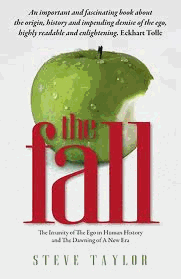 |
Steve Taylor is a lecturer in psychology at Leeds
Metropolitan University, and the author of several best-selling books on
psychology and spirituality.
Author:
The Fall
"Just as the lack of empathy makes cruelty and oppression possible, the
presence of empathy heals conflict. The ability to empathize makes us
truly human, and the wider it stretches - from victims to offenders, from
one ethnic group to another, from nation to nation and religion to
religion - the less brutal and more harmonious a place the world will
become." |
|
|
|
|
|
Dialogs on How to Build a
Culture of Empathy
Karen Gerdes
|
|
 |
|
Associate Professor,
School Of Social Work,
Arizona State University.
We propose that a targeted and structured
explication of empathy is a useful, if not essential, foundation
for social work theory and practice. We outline a social work
framework for empathy, one that is rooted in an interdisciplinary
context, emphasizes recent findings in the field of social
cognitive neuroscience, and yet is embedded in a social work
context..., students can learn to use their knowledge, values, and
skills, informed by empathy, to take empathic action consciously.
Sub
Conference: Science |
|
|
|
|
|
How to Build a Culture of Empathy with Restorative Justice
Molly Rowan
|
|
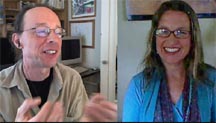 |
|
Founder and Director of Mali Rowan Presents, Mali Rowan
Leach is host, producer, catalyst, social media specialist. Her key focus
is social media & transformation, social healing and restorative justice.
She says empathy is like bridge or a pair of shoes that alchemize one's
awareness,
extending it beyond our immediate selves
into the experiences, feelings, and
awareness's of others in the past, present and future.
The opposite is like living in a dark cave. We
need to move the justice system out of the cave into the light of
restorative empathy and justice.
Sub
Conference: Justice |
|
|
|
Dialogs on How to Build a Culture of Empathy with NVC
Sylvia Haskvitz
|
 |
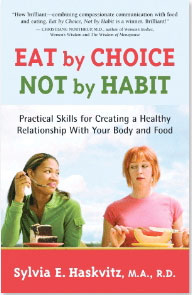 |
Sylvia is a trainer, coach, mentor in Compassionate
Communication, Nutrition Consultant and Registered Dietitian with a
Holistic twist. She offers support in helping people to take full
responsibility for their health and well-being. Author of,
Eat by Choice, Not by Habit.
|
Empathy is like an inner spa, getting a massage, sitting in the hot tub
and relaxing. The opposite is like the pain of hearing the fingernails on
the chalkboard. Creating the empathy spa entails inner work,
compassion within, compassion interpersonally and
compassion in the greater community.
Sub
Conference: NVC
|
|
|
|
|
|
Dialogs on How to Build a Culture of Empathy with Clowns
Dan Roberts
|
 |
 |
Dan Roberts is Founder and Executive Director of the Red
Nose Foundation in Indonesia which is transcending boundaries through
play. |
Red
Nose Foundation provides children with a place to learn and play
together, no matter one’s race, religion or economic standing.
Through the structured study of physical arts (circus), the children
learn that a success is celebrated as a team, and a failure is to be
challenged together. Red Nose Foundation uses a three-step model
to support the development of empathy in our students and to teach them
skills to build and reach their dreams. The first stage is pure arts
exploration. The program was one of winners of
the Activating
Empathy competition.
Sub Conferences:
Education and
Arts
|
|
|
Dialogs on
How to Build a Culture of Empathy in Prisons
Fred Sly & Vika Miller |
 |
|
Fred Sly, Program Director &
Vika Miller, Executive Director, The Oregon Prison Project.
Working
with Compassionate Communications/NVC to transform prisons
and make them cultures of empathy. Fred says
empathy is like a puppy dog pile
where
no-one is embarrassed to play and
all are included versus coldness and mechanical robots.
Vika says it's like a compassionate room where we can be
everything that we are. There is room, space and acceptance
for all that we are as human beings.
The opposite of empathy would be
a closed fist of disconnection,
resistance, closed heartedness.
Sub
Conference: Justice |
| |
| |
|
Dialogs on
How to Build a Culture of Empathy with NVC
Dian Killian |
 |
|
Dian Killian
is
Executive Director
of
the
Center for Collaborative Communication.
Through sharing the consciousness and skills of Collaborative
Communication, we support people in hearing each other and being heard.
Empathy is like an open hand or warm bath versus a clenched fist.
How to build a culture of empathy?
See as many people as possible trained to listen empathically.
See that parents and those working with children can especially listen this way.
See that we all have opportunities for expressing/being heard around
"strong emotions".
Sub
Conference: NVC |
|
|
|
Dialogs on How to Build a Culture of Empathy with NVC
Ray Talyor |
 |
|
Compassionate Communication/ Nonviolent
Communication (NVC) trainer.
How to build a culture of
empathy? Use the phone and Skype to ask for good empathy when upset
about a relationship (in order to support that relationship, not for
bitching/gossip). Use social networking to set up empathy connections as
well as share funny pictures of cats. Don't forget to
talk and listen to the neighbors.
Sub
Conference: NVC |
|
|
|
|
|
Building a
Culture of Empathy with Sports
Dina Buchbinder
|
 |
|
Dina Buchbinder is director of Sports for Sharing. "Our
solution is integrating civic education into children’s lives through games
and sporting activities. Sports for Sharing is driven by three objectives:
raising social awareness, heightening cultural appreciation and promoting
healthy living." One of the values the program promotes is empathy.
The program is one of the 15 finalists out of 600 for the
Activating Empathy
Competition.
|
We talked with Dina about the program and how if
fosters empathy. She says, empathy is like seeing from many different
perspectives, like a prism or kaleidoscope. The opposite is like being in a
dark box with no light. The program was one of 15 Finalists in the
Activating
Empathy competition.
Sub Conferences:
Education
|
|
|
|
|
|
Dialogs on How to Build a Culture of Empathy with Games
Hannah Adams
|
|
 |
|
Hannah Adams is Education Coordinator at the Greater New
Orleans Fair HOUSING Action Center.
In their Equal Opportunity
Game, students are assigned characters and must work in teams to
find the housing that best meets their characters’ needs. Students learn
to empathize with and take the perspective of others.
Some of the
characters “experience” housing discrimination, and students see the
impact discrimination has on access to education, healthcare, jobs, and
other resources via “situation cards” that they draw periodically. The
game was one of 15 Finalists in the
Activating Empathy competition.
Sub Conferences:
Education |
|
|
|
|
|
Dialogs on How to Build a Culture of Empathy with Arts
Education
Mark Rodriguez
|
|
 |
|
Mark Rodriguez is Executive Director of
Changing Worlds
in Chicago, Illinois.
'Changing Worlds is an educational arts nonprofit organization whose
mission is to foster inclusive communities through oral history, writing
and art programs that improve student learning, affirm identity and enhance
cross-cultural understanding.
In a global
landscape where lack of empathy leads to stereotyping, violent behaviors
and lack of human connections, Changing Worlds uses the power of personal
narratives with writing and the arts to build inclusive learning
communities, affirm identity and build cultural and human connections.'
The program was one of 15 Finalists in the
Activating Empathy competition.
Sub Conferences:
Education and
Arts |
|
|
|
|
|
How to Build a Culture of Empathy in Education
Anthony
Cody |
|
 |
|
Anthony Cody spent 24 years working in
Oakland schools, 18 of them as a science teacher at a high needs middle
school. He is National Board certified, and now leads workshops with
teachers focused on Project Based Learning. With education at a crossroads,
he invites you to join him in a dialogue on education reform and teaching
for change and deep learning. He organized the
SaveOurSchoolsMarch.com
to Washington DC.
We talked about the problems in the education system and how empathy can
solve them.
Sub Conferences:
Education |
|
|
|
Dialogs on How to Build a Culture of Empathy with
Psychotherapy
Joseph Burgo |
|
 |
|
Joseph Burgo has practiced psychotherapy for more than 30
years, holding licenses as a marriage and family therapist and clinical
psychologist.
The empathic person is a bit like a sponge, absorbing a part of the
other person's emotional experience and feeling it inside. The
opposite
would be indifference and self-absorption because
they make it
impossible to absorb the feelings of another person.
I suppose the metaphor would be narcissus and his reflection
in the
mirror.
|
|
|
|
Dialogs on How to Build a Culture of Empathy with NVC
Sarah Peyton |
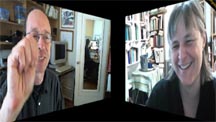 |
|
Sarah Peyton is owner of Interpersonal Neurobiology and
Needs-Based Communication. She offers classes, workshops, teleseminars and
one-on-one sessions bringing together empathy and resonance with an
understanding of the brain for sustainable change that feels good.
How to build
empathy?
1. Lots of education on our own
Interpersonal Neurobiology - how our systems work in relationship, what
resonance is, how it calms us, how to recognize it. 2. An exploration of the way emotions affect
us physically, in particular rage and shame...
Sub
Conference: NVC |
|
|
|
Dialogs on How to Build a Culture of Empathy with NVC
Jim Manske |
 |
|
Jim Manske
is a Compassionate Communications (NVC) trainer at
RadicalCompassion.org.
He says, empathy is like being a tracker that is following the
trail or a delicious banquet, the opposite is a mechanic that is trying to
fix everything.
How can we build a culture of empathy?
Supporting people in creating a life-serving system within themselves,
in their primary
relationship, family, workplace, neighborhood, and community.
Creating systems that reframe conflict as a necessary part of growth and
learning while creating a framework for resolving conflict in a
life-serving way.
Sub
Conference: NVC |
|
|
|
Dialogs on How to
Build a Culture of Empathy with NVC
Jori Manske |
 |
|
Jim and Jori Manske
offer training, mediation, facilitation, organizational transformation,
coaching, mentoring and classes in integrating
Compassionate-Nonviolent Communications (NVC).
Jori
says Empathy
is
like; 2 hearts beating together,
a salve for the heart, or walking with another in sync.
Punishment and domination are the antithesis.
How to build empathy?
Clarity of awareness and intention
- what is empathy and why it matters.
Cultural change can happen in a society within one generation if children
have a model of empathy, and education is a collaborative exploration...
Sub
Conference: NVC |
|
|
|
Dialogs on How to Build a Culture of Empathy with NVC
Irmtraud Kauschat
|
|
 |
|
Irmtraud Kauschat is a medical doctor in Germany who works
with alternative medicine, Compassionate Communication (NVC) and
restorative conflict processes. She uses empathy in her medical practice
and has done conflict mediation in Kenya.
Empathy is like creating bridges between people. The
opposite is like a big river between people where they are separated.
Sub
Conference: NVC |
|
|
|
Dialogs on How
to Build a Culture of Empathy with Mentoring
Daniel Bassill
|
 |
|
Daniel Bassill is founder of Tutor/Mentor Connection and CEO of
Tutor/Mentor Institute, LLC /
Sympathy = random acts of kindness. The philanthropic systems of support
for charity are built more on sympathy than empathy, thus they are not
consistent streams of support that are required to solve
complex
problems in many places. |
How to build a culture of empathy?
a) information collection. b) advertising/public awareness to increase
number looking at info. c) facilitation/building understanding = like what
happens in faith groups every week. d) action – people using ideas in many
places, where they provide time, talent, dollars, leadership, advocacy,
etc. to help kids to careers.
Sub Conference: Education
|
|
|
|
Dialogs on How to Build a Culture of Empathy in
Education
Stan Davis |
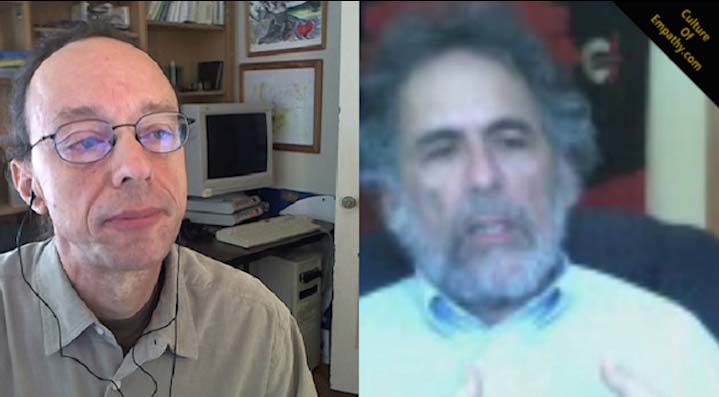 |
|
Stan Davis has worked for human rights in many different
ways. In the 1960s he worked in the US Civil Rights movement. As a social
worker and child and family therapist in the 1970s and 1980s, he worked
with abused, traumatized, and grieving children and trained Child
Protective Workers.
-
"Exciting! We can sustain
level of empathy and concern that younger kids have for mistreated peers
by helping them find safe, positive ways of helping, and they can sustain
the level of empathy into adulthood rather than lose it."
Sub
Conference: Education |
|
|
|
|
|
Dialogs on Building a Culture of Empathy
with Art Therapy
Gillian Vellet |
 |
|
Gillian has an
interdisciplinary background in dance, art education, fine art,
expressive arts therapies, shamanic studies, cultural studies, art
psychotherapy, biodanza dance movement, massage therapy, cranio-sacral
therapy, and visceral manipulation. Gillian's 14 years of
Art Psychotherapy & counseling experience specialization...
Sub
Conference: Arts |
| |
| |
|
Panel 14: 1440 Challenge
Semi-Finalists Building
Empathy Together #2 |
 |
Laura McMullin
Ingrid Stabb
James Hadlock
Mary Ann Brussal
Edwin Rutsch |
In this panel, five Semi-Finalists in the
1440 Challenge came together to dialog about their respective
projects and how they nurture and foster empathy in our society.
Each participant shared their work and then other panelists
responded. Responses included: empathic listening, reflection
about the project, rephrasing or restating what we heard, support,
curiosity and questions about the project. |
|
|
|
|
|
Panel 13: 1440 Challenge Participants
Building Empathy Together |
 |
David A. Levine
Sura Hart
Molly
Rowan
Edwin Rutsch |
In this panel, four
participants in the
1440 Challenge come together to dialog about their respective
projects and how they nurture and foster empathy in our society.
Each participant shared their work and then other panelists
responded.
|
Responses included: empathic listening, reflection
about the project, rephrasing or restating what we heard, support,
curiosity and questions about the project. We then made
connections and collaborative plans for how we can work together
to raise the level of empathy in society.
|
|
|
|
|
|
Empathy and Humane Education
Zoe Weil |
 |
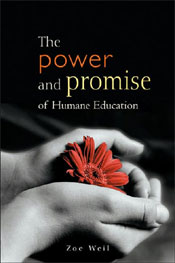 |
I talked with Zoe Weil, founder and
president of Institute for Humane Education about how empathy and
compassion relates to her work with Humane Education.
Author,
The Power & Promise of Humane Education Empathy doesn't just come from within
us. We are susceptible to the situations and systems we are in.
To build a culture of empathy, we have to make sure the systems in
place, food systems, transportation systems, clothing, product
systems are humane and sustainable.
Sub Conference: Education |
|
|
|
|
|
Empathy, Meditation, Barack Obama, Justice &
Law
Charles Halpern |
 |
|
Edwin's interview with Charles Halpern.
'He is a scholar in
Residence at Boalt Hall School of Law, University of California at
Berkeley, is a public interest entrepreneur, an innovator in legal
education, a pioneer in the public interest law movement, and a
long-time meditator. Charles Halpern has been leading a movement to
promote mindfulness and empathy in the practice of law.' |
|
|
|
|
|
Beyond
Forgiveness: Reflections on Atonement -
Opening Reception -
Overview |

 |
|
Edwin's quest for building a culture of
empathy. How does Empathy relate to Forgiveness and Atonement?
Beyond Forgiveness: Reflections on Atonement, Book Reception at
David Brower Center, Berkeley, CA.
I attended this 'Beyond Forgiveness'
book reception last night and asked some of the authors about the
nature of empathy. Mr. Empathy Rabbit encourages everyone to not eat
anyone that has a face or a mother.
Ten contributors were in attendance;
Huston Smith, Jacob Needleman, Rev. Heng Sure, Stephanie Van Hook,
Michael Nagler, Rabbi Michael Lerner, Diane Hennacy Powell, Phil
Cousineau, Sheryl Fullerton, Rich Meyer |
Blog Roll
Continued: Previous <
1 > Next
<Home> < 8 > <
7 > < 6 > <
5
>
< 4 >
< 3 > <
2 > <
1 >
|
|